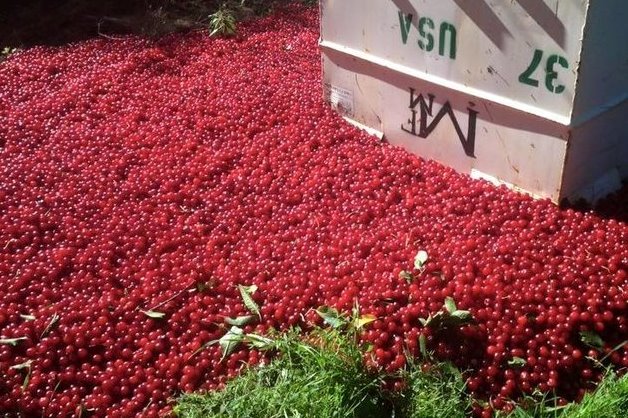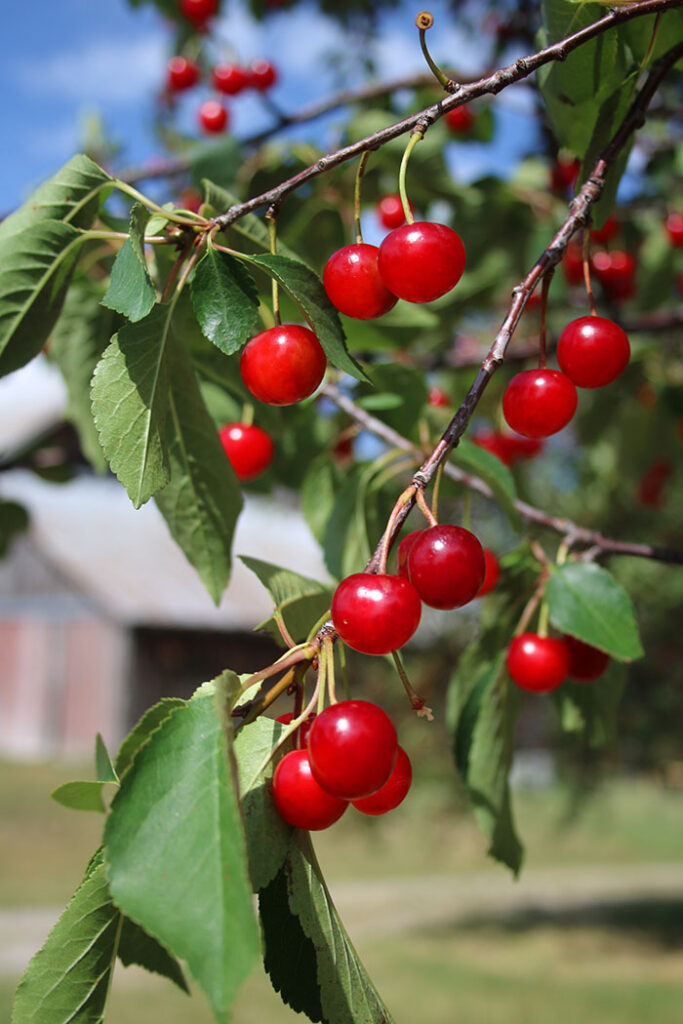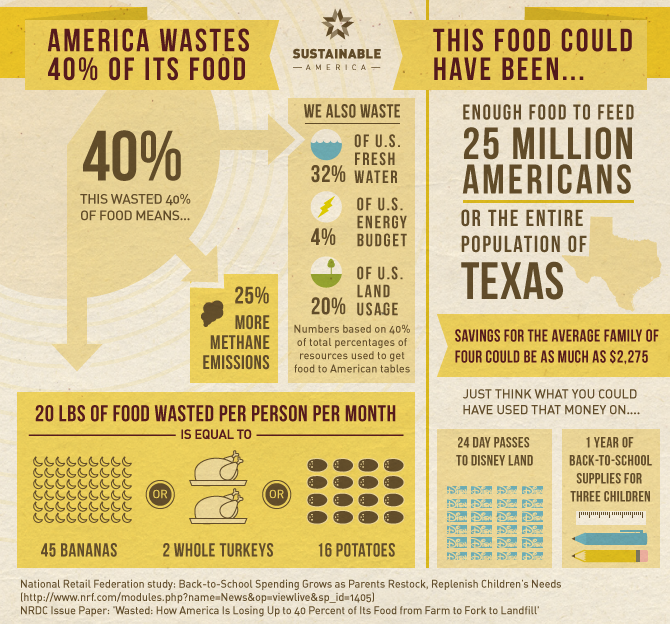
Dumping Cherries – What Happens When the Harvest is Too Big?
The above photo has been shared more than 60,000 times. And on so many levels it is heartbreaking. Santucci Farms in Traverse City, Michigan is dumping cherries…more than 14% of this year’s bumper crop, some 40,000 perfectly good cherries. And to add insult to injury this paves the way for 200 million pounds of imports. Say what?? Just shake the trees and let the gorgeous bright reds fall and rot?
But like most things, there are complex factors at play. The agricultural marketing order driving this action dates back to the 1930s, but the growers and processors willingly opted in only 20 years ago. The goal was to stabilize the market for a very volatile crop. Not to go all micro-economics on you but – supply meet demand? This marketing order favors the farmers in lean years and will limit sales in banner years. And when prices are propped up domestically, that will open the door for cheaper foreign competition.
But even that is not the full story. While it might seem shocking that we are importing while wasting, Michigan (and other domestic) farmers focus primarily on the retail market, while foreign importers (primarily Turkey and Eastern Europe) focus on industrial markets. The industrial market demand exceeds the entire US production, so there is no real way to be competitive there anyway.
Additionally yields vary drastically from year to year, one of the primary motivators behind accepting the USDA plan, with this year boasting a 100 million pound surplus. To complicate matters, this particular crop – the tart cherry – has a very short shelf life – only a couple days, requiring processing right away. But processing capacity is finite, sufficient for average not banner years. Processors are unable to keep up with surplus crops. While there are options for donating surplus, via the Michigan Agricultural Surplus System, an organization that works with 70 farmers to rescue food “too ugly for retail”, the extremely short shelf life of tarts is a big challenge, compared to say potatoes with much greater stability. All this to say, that while that photo reveals a truly tragic waste, the issues are much more complex than rotting cherries.
And the tragic waste is not limited to tart cherries. Food waste in the US is more than 40% of all agricultural production. That is a fact. And each year about 7% of what is produced is not even harvested. So yes there is work to be done. While there are a number of agendas underway to address this epic fail, much of the problem happens at home, and we can make a difference on our own without a global agenda. 70 Billion tons of rotting methane-producing food goes into landfills while 49 million people go hungry. It’s time we all put heads together to #stopfoodwaste. I say: Eat Your Leftovers!!!
Top photo and video courtesy of Santucci Farms. Infographic courtesy of Sustainable America.
© Copyright: KatyKeck.com 2016. All rights reserved.
Hey, we want to hear from you!
Don’t forget to Comment, Share & Subscribe to our blog.


